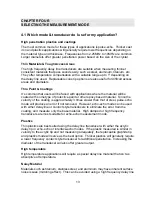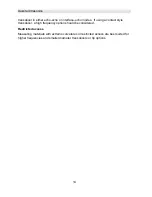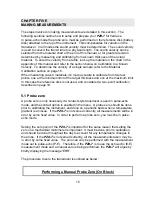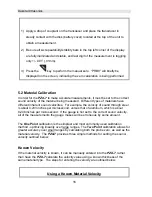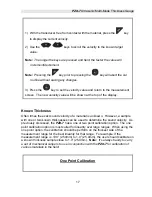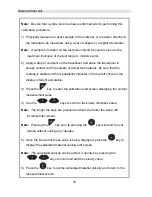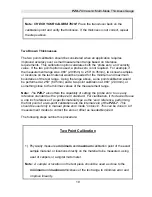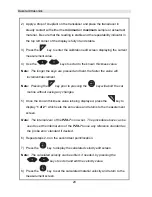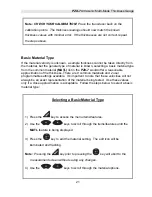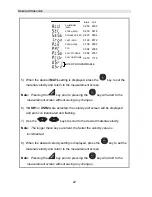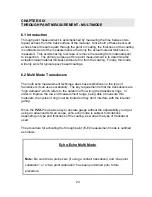
PZX-7
Ultrasonic Multi-Mode Thickness Gauge
19
Note:
CHECK YOUR CALIBRATION! Place the transducer back on the
calibration point and verify the thickness. If the thickness is not correct, repeat
the steps above.
Two Known Thicknesses
The two point calibration should be considered when an application requires
improved accuracy over a small measurement range based on tolerance
requirements. This calibration option calculates both the ‘probe zero’ and ‘velocity
value. If the two point option is used, a probe zero is not required. For example, if
the measurement range was .080” (2.03mm) to .250” (6.35mm), two known samples
or locations on the test material would be needed for the minimum and maximum
boundaries of the test range. Using the range above, a one point calibration would
be performed at .250” (6.35mm) and a two point calibration at .080” (2.03mm), or
something close to the min/max values of the measurement range.
Note:
The PZX-7 also offers the capability of setting the ‘probe zero’ to use any
reference standard as the ‘probe zero’ standard. For clarification, if it’s desired to use
a one inch reference of a specific material type as the ‘zero’ reference, performing
the first point of a two-point calibration sets the internal zero of the PZX-7. This
should be used only in manual probe zero mode “on block”. This can be done in ‘all’
measurement modes to correct the zero or offset as needed/required.
The following steps outline this procedure:
Two Point Calibration
1) Physically measure a
minimum
and
maximum
calibration point of the exact
sample material, or locations directly on the material to be measured, using
a set of calipers or a digital micrometer.
Note:
A sample or location on the test piece should be used as close to the
minimum and maximum thickness of the test range to minimize error and
improve linearity.
Содержание PZX-7
Страница 2: ......









